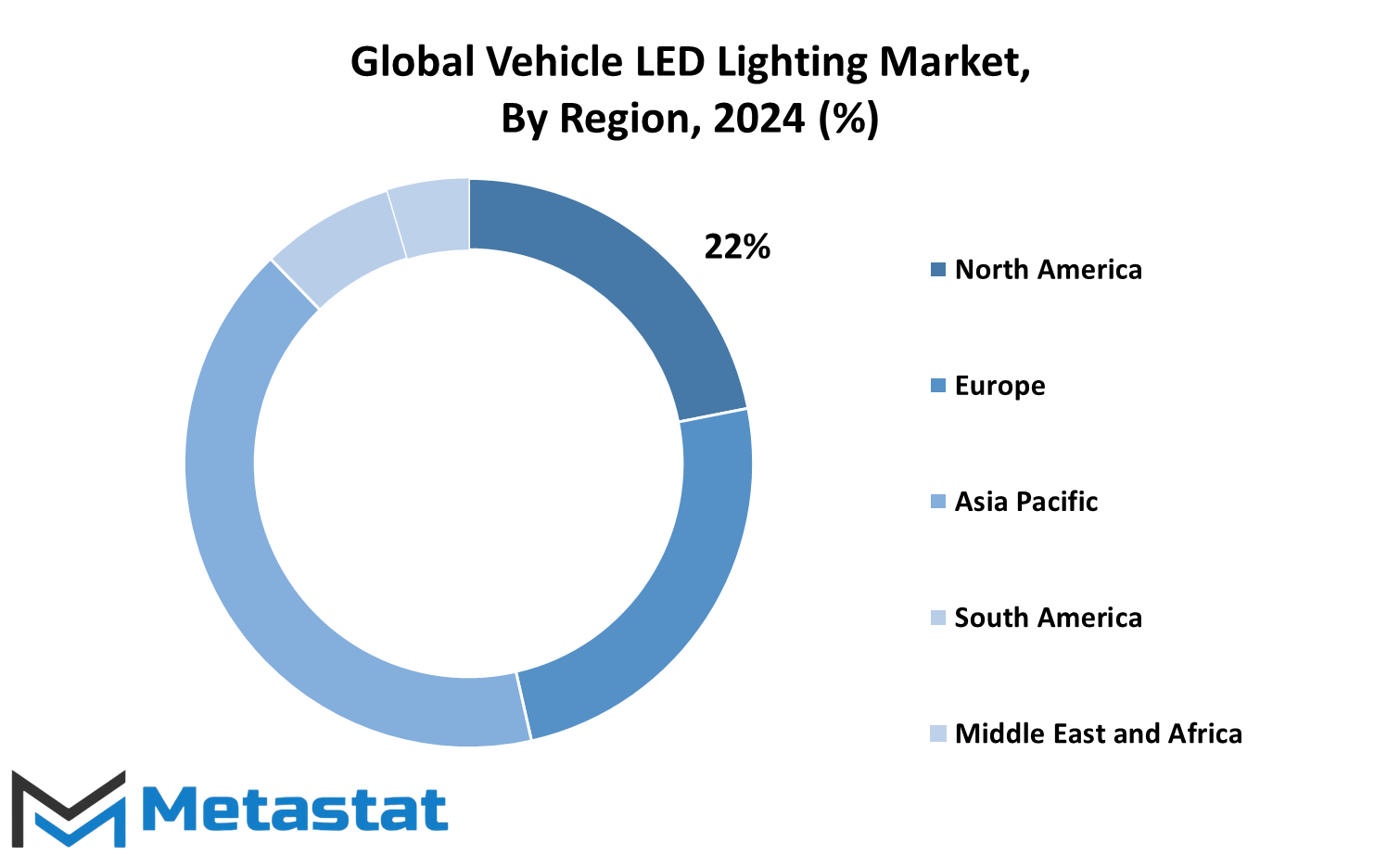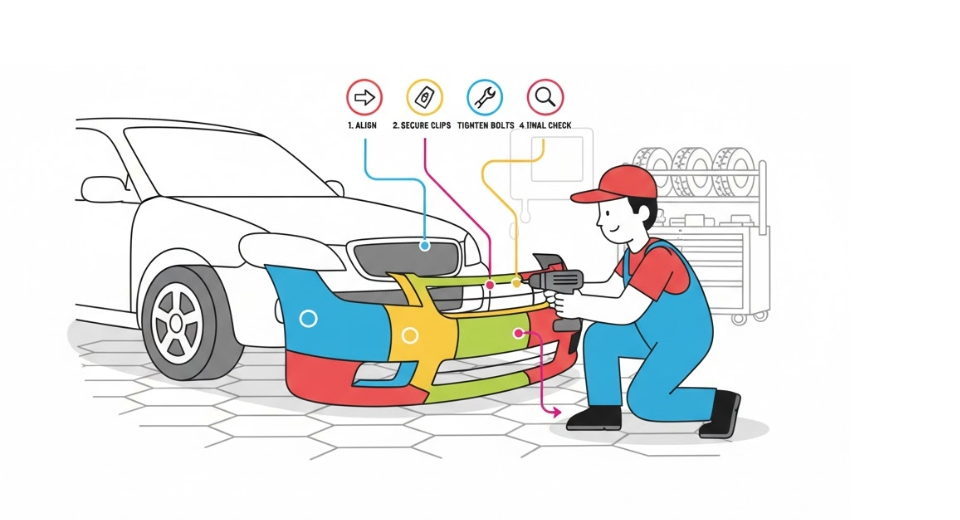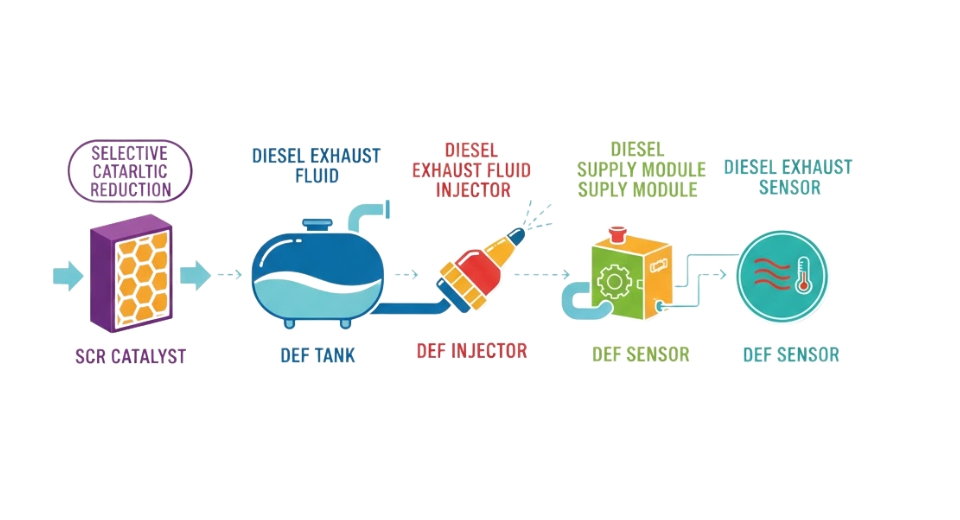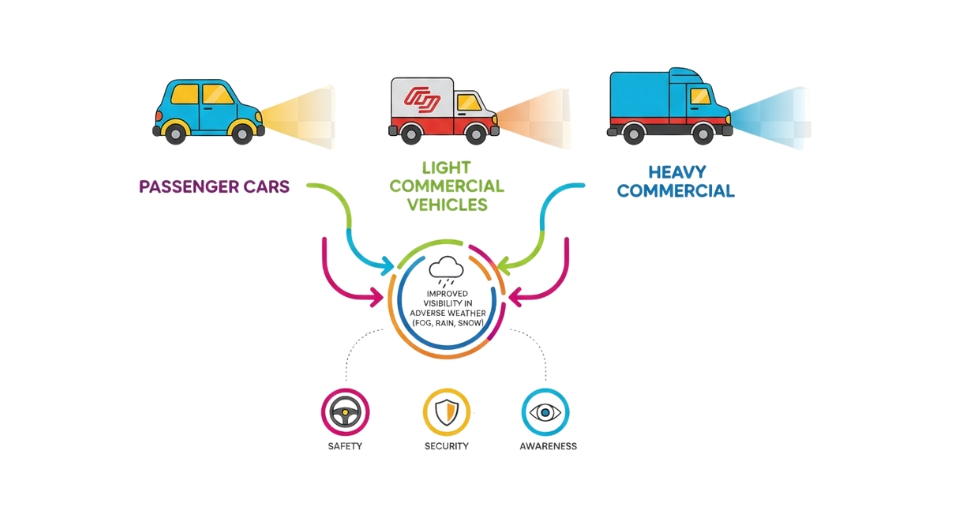MARKET OVERVIEW
The Global Vehicle LED Lighting market is a niche industry within the larger automotive sector, where the focus is on producing and applying LED lighting technology for vehicles. This market is mainly about the design and distribution of LED lighting systems used in different automotive lighting applications, such as headlights, taillights, indicators, interior lighting, and other specialized lighting systems. Lighting innovation in the automotive lighting domain has been brought into new dimensions by the technological features of LED, light-emitting diode, by providing more energy-saving lighting, longer life time periods, and more ecological solution compared to halogen, xenon lamps used classically. LED application and integration in vehicles had created superior illumination, savings from energy consumption, and some innovative designs impossible so long ago.
Unlike traditional lighting systems, LED technology affords more flexibility to automakers to come up with designs that are unique and futuristic, hence making the aesthetic appeal and functionality of modern vehicles much better. The Global Vehicle LED Lighting market will, therefore play a very crucial role in supporting these advancements as there is a growing demand for technologically advanced lighting systems that align with emerging trends in vehicle design and performance. This market is one of the markets with broad application in passenger cars, commercial vehicles, and electric vehicles.
Manufacturers in the Global Vehicle LED Lighting market will continue to innovate by incorporating intelligent features like adaptive lighting, color customization, and dynamic light effects. These innovations will ensure driving safety through enhanced visibility in addition to the overall enhancement of the user experience. Further ahead, the market should experience an increase in adopting high-end LED technologies. The adoption of matrix LED, laser-based LED systems, and organic LED or OLED solutions will be added. These technologies will open new avenues for efficiency and customization, making the Global Vehicle LED Lighting market a dynamic space for technological evolution. The scope of the Global Vehicle LED Lighting market goes beyond the production of lighting systems.
It involves collaboration between LED manufacturers, automotive companies, and technology providers to ensure seamless integration of lighting systems with other vehicle components. These partnerships will shape future new generation illumination that serves specific needs in safety, aesthetics, and energy efficiency. The market also stretches extensively geographically from North America to Europe to Asia-Pacific and then emerging markets, with different regulatory standards and consumer preferences within each region. The evolving regulatory landscape, especially regarding energy efficiency and safety, will impact the future of the Global Vehicle LED Lighting market. In a nutshell, the Global Vehicle LED Lighting market is expected to increasingly become a determining factor in the future of automotive lighting.
With its focus on innovation, energy efficiency, and integration of advanced technologies, the market will continue to cater to the diverse and evolving needs of the automotive sector. Manufacturers and technology providers working together to push the boundaries of what LED lighting can achieve will keep this market as a key driver of progress within the global automotive industry.
Global Vehicle LED Lighting market is estimated to reach $20,244.6 Million by 2031; growing at a CAGR of 9.4% from 2024 to 2031.

GROWTH FACTORS
The global vehicle LED lighting market is expanding steadily. Energy-efficient lighting solutions, aesthetic appeal of vehicles, and safety are the driving forces behind the growth. More and more automakers are using LED lighting technology in their cars to fulfill both consumer requirements and regulations set by authorities regarding energy efficiency. It is also the most viable option because LED lighting emits brighter light but consumes much less power compared to any other light source. It also conforms to a future where energy conservation and sustainability are becoming paramount concerns in the automotive industry.
More consumers today are being attracted to a vehicle with high technology for advanced lighting because this kind of feature will give an extra advantage to appearance as well as functionality. For buyers, LED lighting appeals through customizable and attractive designs for more personalized and high-tech vehicles. Further, enhanced visibility and minimal glare create safer driving conditions and encourage the adoption of LED lighting in all kinds of vehicle segments.
However, there are still a few drawbacks. For one, LED lighting systems are quite expensive at the onset and might discourage budget-conscious buyers, especially in lower priced vehicle segments. Moreover, technical issues such as heat management in compact spaces affect the durability and performance of LED lighting. These drawbacks, although not insurmountable, will most likely slow the widespread adoption of the technology, particularly in cost-sensitive markets.
Looking forward, the rising electric vehicle market provides an even greater opportunity for the global vehicle LED lighting market. Manufacturers in the EV segment focus primarily on components that save maximum energy, making LED lights a perfect choice. Increasingly, as technology becomes more advanced and government benefits are provided to support, the LED lighting in cars will become more widespread in the EV segment. This change is not only sustainable but also innovative in terms of design and functionality in automobiles.
The global vehicle LED lighting market is ready for further expansion, and it is only a matter of time before the benefits of technology and changing consumer preferences are reaped. The adoption of LED lighting is likely to accelerate with improvements in the existing challenges that automakers and lighting manufacturers face today, such as cost reduction and better heat management. With the ability to make vehicles more attractive, safe, and in line with energy-saving goals, LED lighting will play a central role in shaping the future of the automotive industry.
MARKET SEGMENTATION
By Type
The Global Vehicle LED Lighting market is expected to grow significantly with the automotive industry's increasing adoption of advanced technologies to meet consumer demands for safety, efficiency, and sustainability. The shift towards LED lighting solutions reflects their advantages over traditional halogen or incandescent lights. LEDs are energy-efficient, long-lasting, and provide superior brightness, making them a preferred choice for manufacturers and consumers alike. They drive vehicle lighting applications in the major parts to be categorized as headlamps, daytime running lights or DRL, sidelights, turn lights, tail lamps and brake lamps among others that are very essential to increasing visibility and safety as they enhance the comfort and enjoyability of driving.
Headlamps, which have been considered the main light source in vehicles, are quickly changing with LED technology. The luminosity and directionality of LED headlights make nighttime vision much better; thus, there is less risk of accidents. Day running lights, also designed for better visibility in daylight conditions, are fast becoming integral parts of most modern automobiles. In addition to boosting safety, such lights enhance the beauty of a car-a factor that increasingly plays an important role in the buyer's decision.
Sidelights and turn lights, although usually considered secondary in their importance, play an essential role to alert others to a car's existence and intent on the road. LEDs improve the efficacy of these lights because of quick response time and the continuity of lighting. Tail and brake lights alert trailing traffic to its approach. A quick illuminating speed can result in quicker responses before accidents due to following closely behind other cars. Special applications, such as interior ambient lighting and auxiliary lights, improve both function and design. There is huge scope for the growth of Global Vehicle LED Lighting market in the future, because electric and autonomous cars will be taking over the markets soon.
Electric vehicles will require huge energy management and LED lights will perfectly complement this. Autonomous vehicles will call for advanced lighting systems that can effectively communicate with the pedestrians and other vehicles. Sustainability push is also likely to drive innovation in LED technology towards better energy efficiency and environmental friendliness.
As consumers continue to shift their preferences, and the government begins enforcing tougher safety regulations, this market is sure to be in great demand. As such, the Global Vehicle LED Lighting market will, therefore, be a vibrant and crucial sector of the automotive world in shaping vehicle design and functionality.
By Vehicle Type
The Global Vehicle LED Lighting market has been growing steadily with the help of technological advancements and the growing need for energy-efficient solutions. With the automotive industry moving towards more sustainable practices, LED lighting has emerged as a key component, offering long-term benefits in terms of energy conservation, performance, and durability. The market, divided by vehicle type into passenger cars, commercial vehicles, and others, is set to see further innovation and expansion in the coming years.
Passenger cars represent a significant portion of the market due to their widespread use and the demand for enhanced aesthetics and safety features. With LEDs providing brighter illumination and better visibility, automakers are integrating them into headlights, taillights, and interior lighting systems. This trend is not only improving driving safety but also enhancing the overall design and appeal of vehicles. Consumers are demanding new features in their vehicles, and LED lighting fits this bill while saving energy as well.
The commercial market is also witnessing an unprecedented rise in the adoption of LED lighting. From trucks to buses and other specialized vehicles, reliability and low maintenance of LEDs are fast becoming business needs. For example, it's due to the increased lifetime of LED lights, for fleet operators, meaning low replacement costs and fewer times with down time. Secondly, since regulations around automotive lighting continue to improve, several commercial vehicles have updated their lighting systems to new LED-based systems for safer and more efficient performances.
Other vehicle types such as two-wheelers and electric vehicles are also responsible for the growth of this market. Electric vehicles in particular are well aligned with the LED lighting technology because they share the same focus on efficiency and environmental friendliness. Manufacturers are finding innovative ways to integrate LEDs into advanced designs, such as adaptive lighting systems that vary brightness according to road conditions or driver preferences.
Looking forward, in the Global Vehicle LED Lighting market, it is highly going to transform. Innovative lighting, which includes connecting with smart systems where LEDs get interactive with road safety conditions, is likely to bring out the future. So when vehicles become more advanced with automation, LED light is going to be quite relevant in developing features and functionality such as communication signal enhancement and more driver assistive systems.
The Global Vehicle LED Lighting market is growing rapidly in different types of vehicles. It offers energy-efficient, long-lasting, and adaptable solutions and is relevant in the automobile industry's drive toward sustainability and technological advancement.
By Sales Channel
The Global Vehicle LED Lighting market is growing at an incredible pace, driven by numerous factors, including technological developments and increasing demand for energy-saving lighting solutions in vehicles. Looking ahead, the future of the market will most likely be even more dynamic, especially with a more significant emphasis on eco-friendly products and improved vehicle aesthetic appeal. Among these aspects, the most critical growth driver of this market is segmentation by sales channel. There are OEM (Original Equipment Manufacturer) and aftermarket sales.
OEM deals with lighting solutions put on by the vehicle manufacturing unit in the production. OEM takes a considerable portion in this market because of constant demands from automobile manufacturing firms for the latest illumination technology in order to gain mileage, safety, and look and feel of their product. LED lights, which offer more stylish and functional automobiles, are certainly in high demand from automobile consumers. The reasons automakers prefer LED lighting on their offerings are many and include its energy efficiency and long lifespan, allowing road users to have much visibility on the road. An even greater emphasis is in store for LED lighting being the standard feature on most new vehicles in the coming years.
The other is the aftermarket which addresses a customer who has purchased the vehicle and seeks to either upgrade or change its lighting system. In that sense, the aftermarket demand for LED lighting products is anticipated to increase in light of the fact that people want to customize their cars with different options of illumination that can either offer improved looks or functionality of the vehicles. This segment will benefit from the growing trend of car customization, and the market will likely see more innovations in aftermarket lighting products to meet the diverse needs of vehicle owners.
Going forward, both OEM and aftermarket segments will continue to grow in the Global Vehicle LED Lighting market. Advances in LED technology in the form of smarter and more energy-efficient lighting systems will continue to drive both segments. The focus on sustainability and energy conservation will push automakers to further adopt LED lights, with the aftermarket sector thriving due to consumers’ desire for personalization. These trends will continue to paint the Global Vehicle LED Lighting market as an evolving yet competitive frontier that holds much potential for expansion and innovation.
|
Forecast Period |
2024-2031 |
|
Market Size in 2024 |
$11,405.6 million |
|
Market Size by 2031 |
$20,244.6 Million |
|
Growth Rate from 2024 to 2031 |
9.4% |
|
Base Year |
2022 |
|
Regions Covered |
North America, Europe, Asia-Pacific Green, South America, Middle East & Africa |
REGIONAL ANALYSIS
The global Vehicle LED Lighting market has experienced exponential growth over the years, and it is believed to keep growing with new technologies coming into the world. This market is categorized based on regions, with each region showing unique trends and potential. The regional analysis of this market points out how different areas adopt LED lighting technology in vehicles, based on regulations, technological advancement, and consumer preferences.
North America primarily consists of the United States, Canada, and Mexico. The demand for efficient energy lighting solutions in the automotive sector is strong across this region. The regions have been quick to take on LED technology due to the environmental benefits and high demand for reducing carbon footprint. As regulatory frameworks for the U.S. and Canada become tighter on vehicle emissions and energy efficiency, there is expected to be increased reliance by manufacturers on LED lighting as a solution. The use of autonomous vehicles and smart technologies is likely to also increase the usage of LED lights since it provides a better view compared to conventional lighting, durable, and energy-efficient.
Vehicle LED lighting is another important market in Europe. Countries such as the UK, Germany, France, and Italy are the front runners for this region. Manufacturers here are under pressure due to stringent regulations related to emissions and safety standards for vehicles. European car makers have become focused on the sustainability and performance of vehicles and, therefore, the light-emitting diode lights have a crucial role in these vehicles. The consumers prefer the style and modern looks of LED lighting in their vehicle, particularly in luxury and premium vehicles. The electric vehicle (EV) market in Europe will also create a new avenue for growth for the Vehicle LED Lighting market.
The Asia-Pacific region is likely to lead the global market for Vehicle LED Lighting over the next years. China, Japan, South Korea, and India are among the fastest-growing automotive markets, where the demand for advanced lighting solutions is growing. LED lighting is already widely used in the automotive sector in China, and the market will continue to grow with further expansion in the country, which is a significant production hub for vehicles. Higher disposable incomes together with increased demand in more fuel-efficient and technological means of transport will thus make a large contribution in regional growth of the market on LED lighting.
While at it, in South America, nations such as Brazil and Argentina are now moving gradually with the installation of LED lighting in automobiles. As the automotive industry in these countries continues to grow, more is expected for the need of LED lighting, especially with an emphasis on fuel efficiency and sustainability. Vehicle LED lighting adoption in the Middle East and Africa is expected to be sluggish. In countries like Saudi Arabia, the UAE, and South Africa, while there is potential for growth, market adoption will depend on various factors, including economic conditions, regulatory environments, and the region's general automotive market development.
Overall, the global Vehicle LED Lighting market will continue to grow, shaped by technological advancements, regulatory changes, and shifting consumer preferences. Each region has its own unique set of challenges and opportunities, but the overall trend points toward increasing adoption of LED lighting as a standard in vehicle design and manufacturing.

COMPETITIVE PLAYERS
The Global Vehicle LED Lighting market has experienced tremendous growth in the past few years, and it is expected to grow with new technologies and innovations. It is primarily driven by the increasing demand for energy-efficient, durable, and customizable lighting solutions in vehicles. Among the trends observed within this market is the rapidly increasing adoption of LED lighting, which presents many benefits over existing lighting technologies. Some benefits include less energy usage, more extended life spans, and brighter lighting. These aspects will continue to gain increasing importance for consumers and producers in the short term since they tend to be mindful of the environmental impact created by their operations.
The competition in the Global Vehicle LED Lighting market is fierce, with several key players vying for market share. Among the leading companies are OSRAM Licht AG, Nichia Corporation, Lumileds Holding B.V., and Stanley Electric Co., Ltd., each of which has a strong presence in the industry. These companies have heavily invested in research and development to stay ahead of the curve and meet the growing demand for advanced lighting solutions. Their products are already known for their high quality, energy efficiency, and performance, and it is expected that they will continue to lead the market with innovative lighting technologies.
Other significant players in the market are Seoul Semiconductor Co., Ltd., HELLA GmbH & Co. KGaA, and Koito Manufacturing Co., Ltd. They are known for their proficiency in automotive lighting and have established themselves as significant suppliers of LED lighting for vehicles. In the future, we can expect these companies to further improve their products, incorporating smarter features such as adaptive lighting systems and integration with vehicle safety technologies.
Marelli Holdings Co., Ltd., Valeo SE, and Depo Auto Parts Industrial Co., Ltd. are also helping to influence the market through the wide availability of LED lighting products for passenger and commercial vehicles. As the industry shifts to more advanced lighting solutions, the demand for these companies' products is expected to increase significantly with the heightened emphasis on aesthetics, safety, and energy efficiency.
Others contributing to this growth are EPISTAR Corporation, Neolite ZKW Lightings Pvt., Ltd., and SL Corporation through their specialized LED solutions to make automotive lighting both functional and stylish. Going ahead, the shift towards electric vehicles in the automotive industry would generate a greater demand for lighter, high-performance light sources that could cater to specific needs of electric and hybrid vehicles.
In a nutshell, the Global Vehicle LED Lighting market will be a competitive field where well-established players and new entrants will continue to struggle with the changing requirements of the automobile industry. As technology is improving and the demand of consumers for efficient and visually appealing lighting solutions is rising, the future of this market is quite bright. The key players in the market will no doubt continue to innovate and shape the direction of vehicle lighting, ensuring that the industry remains dynamic and responsive to the changing needs of the global automotive market.
Vehicle LED Lighting Market Key Segments:
By Type
- Headlamp
- DRL
- Sidelights
- Turning Lights
- Tail Light
- Break Light
- Others
By Vehicle Type
- Passenger Car
- Commercial Vehicle
- Others
By Sales Channel
- OEM (Original Equipment Manufacturer)
- Aftermarket
Key Global Vehicle LED Lighting Industry Players
- OSRAM Licht AG
- Nichia Corporation
- Lumileds Holding B.V.
- Stanley Electric Co., Ltd.
- Seoul Semiconductor Co., Ltd.
- HELLA GmbH & Co. KGaA
- Koito Manufacturing Co., Ltd.
- Marelli Holdings Co., Ltd.
- Valeo SE
- Depo Auto Parts Industrial Co., Ltd.
- EPISTAR Corporation
- Neolite ZKW Lightings Pvt., Ltd.
- SL Corporation
- Ta Yih Industrial Co., Ltd.
- Toyoda Gosei Co., Ltd.
WHAT REPORT PROVIDES
- Full in-depth analysis of the parent Industry
- Important changes in market and its dynamics
- Segmentation details of the market
- Former, on-going, and projected market analysis in terms of volume and value
- Assessment of niche industry developments
- Market share analysis
- Key strategies of major players
- Emerging segments and regional growth potential








 US: +1 3023308252
US: +1 3023308252






